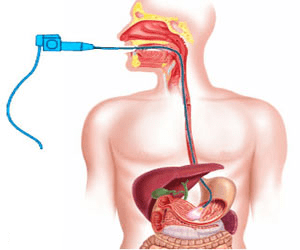Premium Digestive Disease Clinic – Therapeutic Gastroscopy in Nashik
What is Diagnostic Gastroscopy?
A gastroscopy is a procedure where a thin, flexible tube called an endoscope is used to look inside the esophagus (gullet), stomach and the first part of the small intestine (duodenum). It’s also sometimes referred to as an upper gastrointestinal endoscopy. The endoscope has a light and a camera at one end.
You are scheduled for a gastroscopy (sometimes called upper endoscopy). It is a diagnostic procedure that gives information about your health problem. It is done with a flexible, lighted instrument that enables your doctor to see your esophagus (swallowing tube), stomach, and duodenum (small intestine).

What are the risks?
A gastroscopy is a very safe procedure, but like all medical procedures, it does carry a risk of complications.
Possible complications that can occur include:
- A reaction to the sedative, which can cause problems with your breathing, heart rate and blood pressure.
- Internal bleeding.
- Tearing (perforation) of the lining of your esophagus, stomach or duodenum.
What is Therapeutic Gastroscopy:
Therapeutic endoscopy is the medical term for an endoscopic procedure during which treatment is carried out via the endoscope. This contrasts with diagnostic endoscopy, where the aim of the procedure is purely to visualize a part of the gastrointestinal, respiratory or urinary tract in order to aid diagnosis. In practice, a procedure that starts as a diagnostic endoscopy may become a therapeutic endoscopy depending on the findings, such as in cases of upper gastrointestinal bleeding, or the finding of polyps during a colonoscopy.
Therapeutic endoscopy is sometimes used to treat stomach ulcers or oesophageal bleeding caused by gastroesophageal reflux. This procedure can also be used to treat:
- Mouth cancer
- Lung cancer
- Stomach cancer
- Esophageal Stricture
- Removal of benign (non-cancerous) growths
- Provide nutrition (feeding tube) for patients unable to eat.

